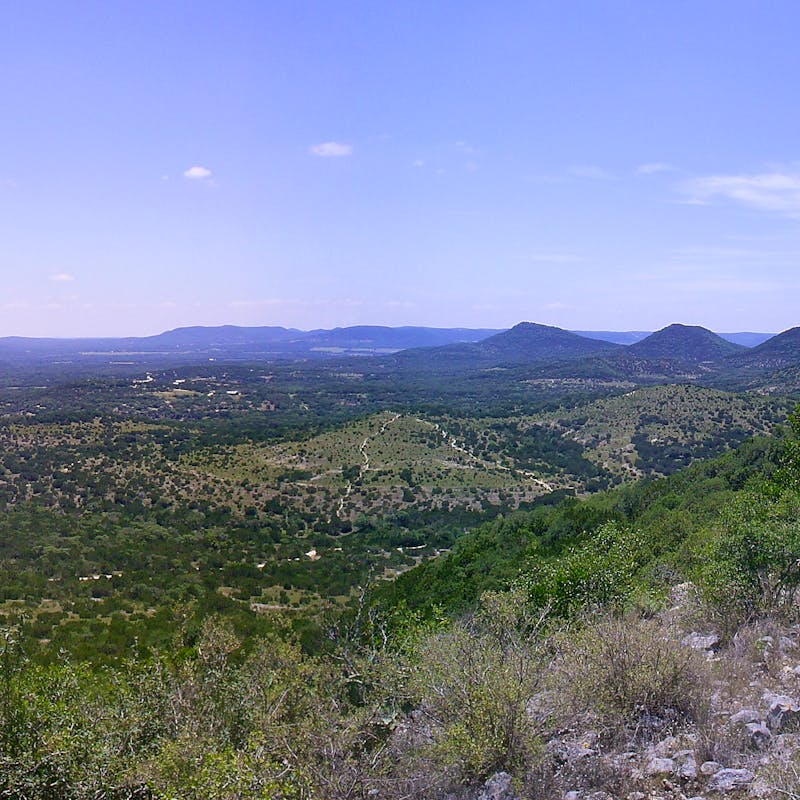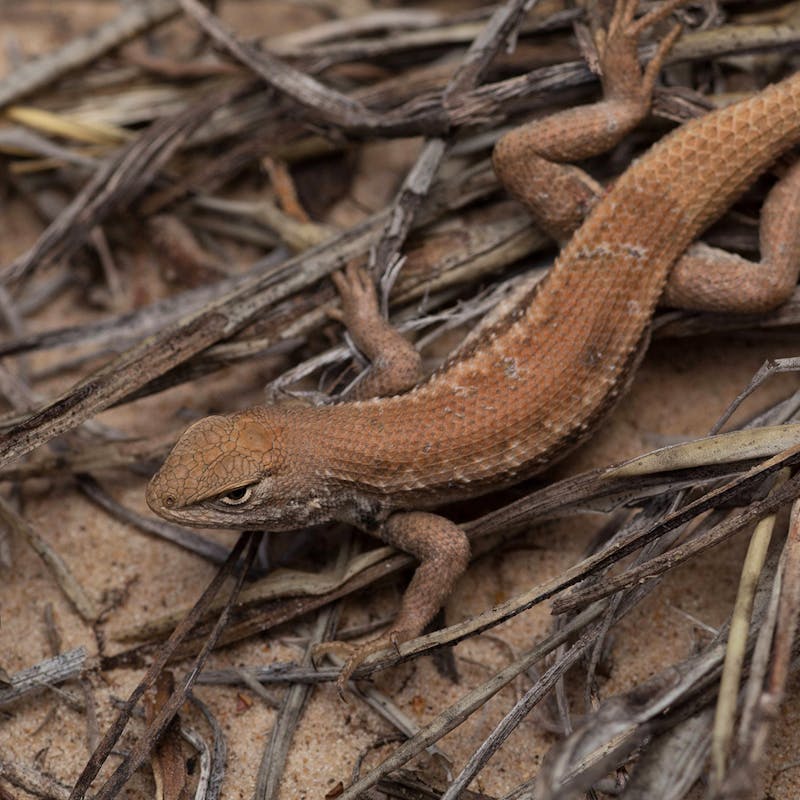Cooling off in the Blanco river on a lazy summer afternoon when I was a kid was one of my favorite things to do in the Texas Hill Country. It seemed so wild and serene at the same time. We visited every state park or roadside stop next to a river over the carefree summers of my youth, growing to enjoy and respect the Texas wilderness. Now, working for Defenders of Wildlife in Texas so many years later, I drive through those same areas and find stacked rows of huge pipes, not 100 feet from that same beautiful Blanco river. Soon, they’ll become a metal snake through the wild spaces in the heart of Texas, with a valuable and poisonous gas pressuring its way from dry west Texas to the humid Gulf Coast and on to ships.
The Texas Hill Country is known worldwide for its rustic hills, springtime wildflowers, sparkling rivers and creeks, sprawling cattle ranches, peach and pecan orchards, and more recently, world-class wineries and nature tourism. Historically a quiet place, the Hill Country has seen a lot of growth over the last 20 years, mostly along Interstate 35 highway from Austin to San Antonio. It’s the Edwards Plateau that gives the region its name, providing a shift in the geography of the edge of the Great Plains in northwest Texas down to the coastal prairies.
The Edwards Plateau sits atop the Edwards and Trinity aquifers. This incredible landscape is now threatened by the $2 billion, 430-mile-long Kinder Morgan (KM) “Permian Highway Pipeline” as it’s been named. It will carry gas from Coyanosa, in West Texas to the Gulf Coast, impacting the region’s waterways and wildlife along the way.
The golden-cheeked warbler is among the unique wildlife that may be affected. Central Texas is the only breeding ground on Earth for the golden-cheeked warbler. This small endangered songbird migrates from Central America and Mexico to Texas each year, to breed among the area’s old growth oak-juniper forests. The bark of mature ashe juniper trees (known as cedar), is the crucial material for the bird’s nest-building. The 42-inch pipeline would require 125-feet of wildlife habitat as it snakes through the Hill Country. There is a 50-foot easement for the buried pipe, with an additional 75-foot construction and maintenance easement that will destroy parts of this essential forest habitat, reducing the areas where the warblers feed and reproduce before migrating south for the winter. Other endangered or threatened species will be affected, like native Texas salamanders and spiders in the caves where the pipeline will pass, and wild rice in local rivers; all endemic to this region. Funny-sounding native mussels like the Texas pimpleback are found in these waterways and will also be affected. University of Texas scientists have said that “[t]he karstic Edwards–Trinity aquifer system of west-central Texas is one of the most species-rich groundwater systems in the world.”
In addition to the potential loss of critical wildlife habitat, the pipeline will cut under rivers, creeks and springs. Any gas leaks would threaten vital aquifers and public safety. The karst limestone of the region doesn’t filter out pollutants; everything goes straight into the aquifer. With five rivers, 25 creeks and three main aquifers, the ecosystem provides fresh water to almost four million people, livestock and wildlife. The population along the Austin – San Antonio corridor is expected to double by 2050, so threats to the region’s fresh water would have tremendous health and economic impacts over the coming years. While 2019 has been a good year for rain, Texans know about droughts and the importance of maintaining aquifer quantity and quality. Over the past decade, Hill Country residents have worked with local governments to define and implement Watershed Protection Plans. Through hands-on processes, they set goals to secure their future water. This pipeline undermines the money, knowledge, time and goals of these inclusive actions by local people to protect their fresh water.
The Hill Country’s natural areas represent important economic and cultural benefits to millions of people. While Kinder Morgan promises fewer than 20 permanent jobs and millions in tax revenue for affected communities, the benefits from the region’s water and wildlife are far greater. The irreplaceable benefits threatened by this pipeline – clean water, healthy landscapes and abundant wildlife – are priceless.
This “Permian Highway” is not the first oil or gas pipeline to cross the state, but after decades of pipeline explosions and accidents across the country and with greater awareness and access to information, many landowners and communities are concerned about their safety and the integrity of their environment. From 2015 to 2017, there were 11 pipeline explosions reported in the U.S. A growing number of Hill Country communities have passed ordinances opposing the pipeline. This pipeline will be only 300 feet from some homes in residential communities. Homeowners understand the threats and are actively fighting the pipeline. Ranchers have joined forces with local cities to oppose the pipeline’s route and challenge eminent domain. Although the Texas Railroad Commission oversees permitting, Kinder Morgan alone determines the pipeline’s route. The company claims eminent domain under the law because it provides a “public benefit,” but the public does not participate in the decision-making during any part of this process. The pipeline is labelled “public use” because it might transport more than one private company’s gas. State law doesn’t give the property owners a voice when a pipeline company wants a piece of their land. Over 10 bills to regulate eminent domain were presented in the state legislature this year, highlighting how important the issue is to Texans. Unfortunately, none of them passed. However, the Railroad Commission is proposing new safety regulations for “gathering lines” of rural pipelines.
Texas law states that the company must “restore the property … to its former condition as near as reasonably practicable.” How this is done is not clear because no environmental impact assessment or habitat conservation plan are required. Kinder Morgan avoids most federal regulations because the pipeline runs entirely within the state, but impacts on watersheds and wildlife, especially endangered species, still should be considered.
Kinder Morgan has volunteered actions to reduce impact, but they are not enough to address real threats to the golden-cheeked warbler’s habitat, or to any of the other endangered species and their habitats. It takes centuries to restore old growth oak-juniper stands. Damage to watersheds and aquifers is virtually impossible to restore. With what’s at stake, the company must fully comply with the Endangered Species Act and the Clean Water Act. Given the justification of eminent domain for a private company and the potential impacts, the process should be transparent and participatory. As it stands, eminent domain for a private pipeline may cause imminent threat to the Hill Country’s watershed, wildlife and communities. Several local organizations have said that if the pipeline cannot be stopped, then it at least be rerouted south of the Hill Country, outside of the karst geography and aquifer recharge zones.
Now, almost 40 years after my carefree days of summer swims, I sit on the banks of Cypress Creek near Wimberley, wondering what is to become of this place. I realize how fragile the Hill Country’s natural beauty is and I wonder if we will be able to protect water and wildlife for future generations. Liquefied natural gas can’t take the place of water for livestock, crops, wildlife and people.
Will we find a balance between fossil fuel energy needs and people’s right to private property, secure drinking water and natural spaces?
Will kids a generation from now know the joys I knew of splashing in the fresh wild rivers?
Will the water and the warbler still have a place?
Excerpts from this essay were previously published in the San Antonio Express on June 12, 2019.













